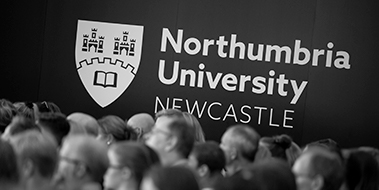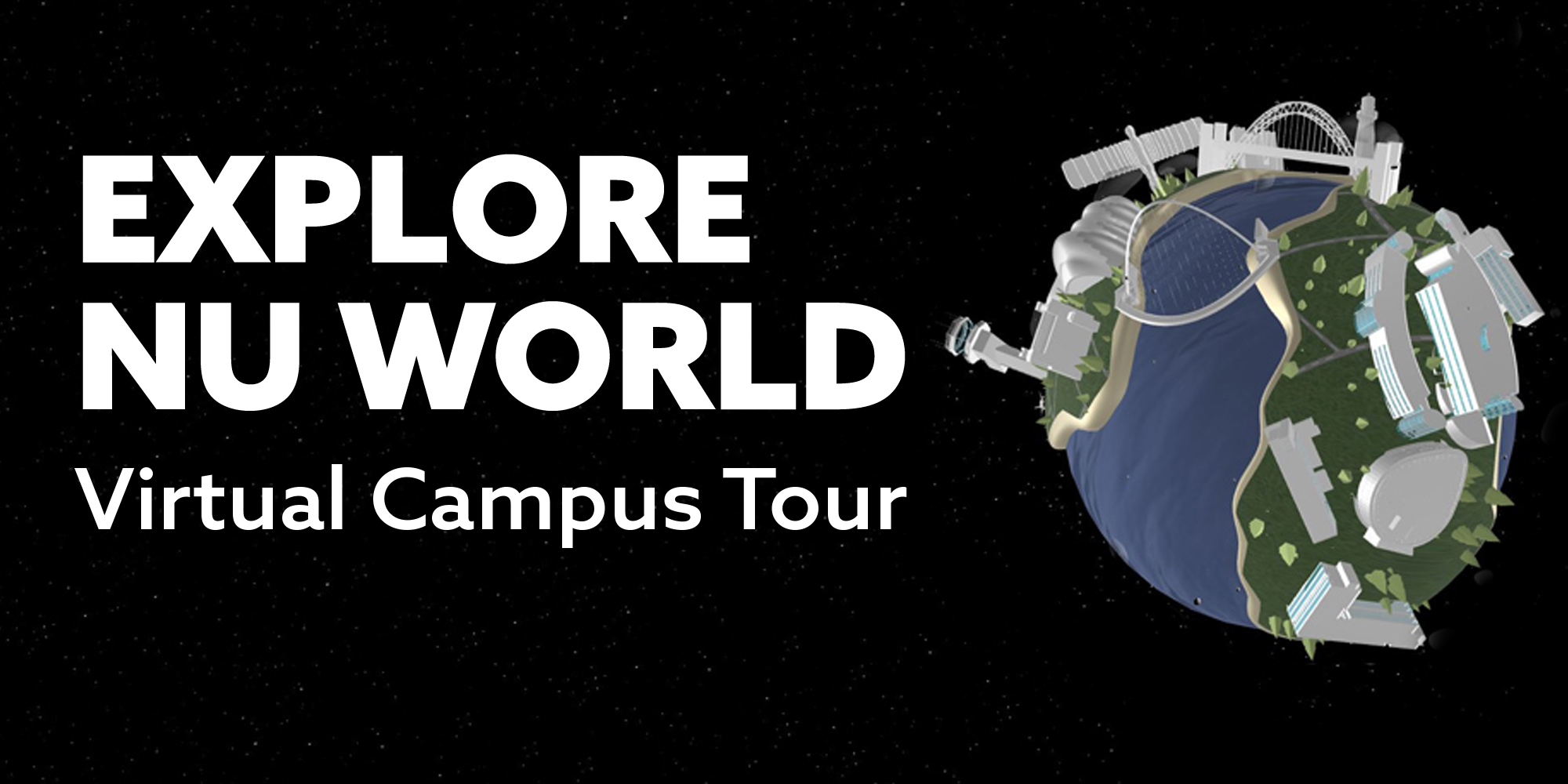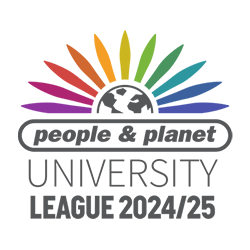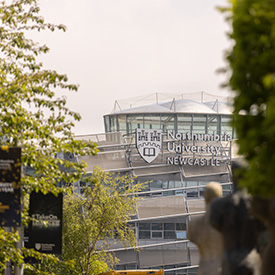-
Study
-
Undergraduate
- Search for a Course
- Undergraduate Open Day & Events
- Application Guides
- Northumbria University UCAS Exhibitions
- Foundation Years
- Undergraduate Fees & Funding
- School & College Outreach
- Continuing Professional Development
-
Postgraduate
- Postgraduate Study Degree
- Postgraduate Research Degrees
- Postgraduate Open Days and Events
- Postgraduate Fees & Funding
- Flexible Learning
- Thinking about a Masters?
- Continuing Professional Development
- Change Direction
-
Student Life
- The Hub - Student Blog
- Accommodation
- Life in Newcastle
- Support for Students
- Careers
- Information for Parents
- Students' Union
- Northumbria Sport
- Be Part of It
-
-
International
International
Northumbria’s global footprint touches every continent across the world, through our global partnerships across 17 institutions in 10 countries, to our 277,000 strong alumni community and 150 recruitment partners – we prepare our students for the challenges of tomorrow. Discover more about how to join Northumbria’s global family or our partnerships.
View our Global Footprint-
Applying to Northumbria
- European Union
- Our London Campus
- Northumbria Pathway
- International Events
- Entry Requirements and Country Representatives
- Global Offices
-
Northumbria Language Centre
- Faculty Requirements
- Acceptable English Requirements
- Pre-sessional English Language and Study Skills
- Academic Language Skills Programmes (ALS)
-
International Fees, Funding & Scholarships
- International Undergraduate Fees
- International Undergraduate Funding
- International Masters Fees
- International Masters Funding
- International Postgraduate Research Fees
- International Postgraduate Research Funding
- International Money Matters
-
Life at Northumbria
- International student support
- Careers
-
International Mobility
- Current Northumbria Students
- Incoming Exchange Students
-
-
Business
Business
The world is changing faster than ever before. The future is there to be won by organisations who find ways to turn today's possibilities into tomorrows competitive edge. In a connected world, collaboration can be the key to success.
More on our Business Services -
Research
Research
Northumbria is a research-rich, business-focused, professional university with a global reputation for academic quality. We conduct ground-breaking research that is responsive to the science & technology, health & well being, economic and social and arts & cultural needs for the communities
Discover more about our Research -
About Us
-
About Northumbria
- Our Strategy
- Our Staff
- Place and Partnerships
- Student Profiles
- Alumni Profiles
- Leadership & Governance
- Academic Departments
- University Services
- History of Northumbria
- Contact us
- Online Shop
-
-
Alumni
Alumni
Northumbria University is renowned for the calibre of its business-ready graduates. Our alumni network has over 246,000 graduates based in 178 countries worldwide in a range of sectors, our alumni are making a real impact on the world.
Our Alumni - Work For Us
What will I learn on this module?
The module will provide you with the knowledge and skills in system design around two key themes of optical fibre and optical wireless communications. These are essential topics for modern telecommunications and cover advanced optical system designs as well as including industrial standards in both fibre and wireless systems. Optical fibre communications provides the backbone long-haul and medium range telecommunications that offers ultrahigh data transmission capacity whereas optical wireless communications is an emerging technology. This technology enables data transmission, either in the infrared or visible light bands, employing lasers or light emitting diodes (LED) for indoor and short range communications system.
The module syllabus covers the technical analysis of optical fibre and wireless communications both at a system and sub-system level. Performance calculations and design considerations are covered, specifically in the areas of optical transmitters and receivers, Careful examination of performance limiters will be defined and methods to offset them will be explored and analysed for optimum design. These limiters include such effects as modulation, noise, dispersion, modal transmission, multipath effects, diffusion, fog, turbulence, smoke etc.
System performance is developed and explored to maximise the capability of a communication channel covering such aspects as link budgets, multiplexing techniques, BER analysis etc. allowing the performance criteria being characterised to meet a system specification
With these developed skills and knowledge you will be able to undertake the design and analysis of a complex optical communication system, making judicial choices and improvements.
How will I learn on this module?
The module will be delivered using a combination of lectures, tutorials, laboratory workshops, and directed and independent learning.
The learning and teaching approach will include introducing you to the theoretical aspects during the lectures. The application aspects will be further studied throughout the tutorial sessions, including problem solving and numerical simulation. In directed learning, you will be instructed to prepare for the lectures including reading the notes, finding and analysing relevant information in advance. Integrated quizzes and small tests will be frequently given during the class and tutorial sessions. Working groups will be formed to encourage you to engage critical discussion in class. Case studies will be used to demonstrate and reinforce the lectures and labs.
Small groups will be formed for laboratory workshops. Lab work will be a combination of the theory introduction, experiment procedure and set of questions that help you to analyse the results and refer them to existing research findings. Laboratory session will also provide the appropriate experiment methodology, optoelectronics hardware and simulator (LabVIEW and Matlab). You will be trained to utilise basic and advanced measurement instrument and associated application packages.
Throughout the module, you will gain extensive practical and numerical simulation skills essential for future employment in the optical communications industry
How will I be supported academically on this module?
Lectures, tutorials and laboratory workshops will be used to deliver the module. These provide you with the key academic support for the module. Lecture notes are the main element to provide the theoretical content and the research-rich based tutorials will help you to solve system design problems; however around these is build a number of support structures.
Workshops, supported by research tutors and technicians, provide verbal feedback and comments throughout the sessions. This feedback will cover technical, procedural and recording of results. A key aspect of this will be in stimulating the questioning the results and reference to the theoretical material in the module lectures. In addition, you will reflect upon the findings via research literature and industrial systems under the guidance of workshop tutors.
The eLearning-Portal (eLP), which has 24hr access, will contain all the module taught content and assessment guidance. In addition links to reading list support and relevant professional body related web sites. These will provide an industrial and research base to relate theory to the application of optical communications in a context.
Past-year course works will be available via eLP.
Feedback on student learning will take the form of verbal feedback during the tutorials and workshop sessions. However individual feedback may be obtained by arrange of appointments with the module tutor. Assessment feedback will be provided either in written or electronic form.
What will I be expected to read on this module?
All modules at Northumbria include a range of reading materials that students are expected to engage with. Online reading lists (provided after enrolment) give you access to your reading material for your modules. The Library works in partnership with your module tutors to ensure you have access to the material that you need.
What will I be expected to achieve?
Knowledge & Understanding:
1. Analyse and apply knowledge and understanding to systematically design, analyse and appraise optical communication systems in industrial scenarios. (M1)
2. Use appropriate tools, methods and appropriate research techniques to undertake design and analyse the problems in optical communication systems to obtain high quality innovative solutions (M3)
Intellectual / Professional skills & abilities:
3. Critically examine the problems in optical communications and develop a critical awareness of new research. (M5)
Personal Values Attributes (Global / Cultural awareness, Ethics, Curiosity) (PVA):
4. As a group leader or member to solve practical problems in optical communications lab. (M16)
5. Understand the use of technical literature and other information sources of optical communications in the development of innovative solutions. (M4)
How will I be assessed?
Summative assessments in this module are:
1. Course work (CW): (2000 - 2500 words) – Lab Report (40%). Module learning Outcomes – 1-5 will be assessed. Includes reflective and peer assessment as part of 2 per Group. There will be a statement by students stating their specific contributions to the report.
2. Course work (CW): (2000 - 2500 words) - Individual assessment (60%) in the form of a report based on Matlab simulation. Module learning Outcomes – 1-3, 5 will be assessed.
Pre-requisite(s)
N/A
Co-requisite(s)
N/A
Module abstract
In this module you will acquire extensive knowledge and skills in optical communications system design covering both optical fibre and optical wireless areas. You will learn the fundamental concepts, theory and key system design for an optical communications system. Main system elements such as light propagation, light attenuation, transmitter design, light-emitting-diode (LED), photodetector, fibre nonlinearity, wireless channel, noises, losses, power distribution and link budget will be taught and analysed throughout the lectures and seminars. You will carry out some numerical evaluation of the LED performance using MATLAB and verify with practical data. There will be an opportunity for carrying out experiments and improve your practical skills through laboratory workshops. You will gain experience in the creation of a real design solution, from concept to realisation in the form of system design and evaluation.
Throughout the module you are able to enhance your research ability, your analysis and problem solving skills as well as understanding technologies applied in related industrial fields.
Course info
Credits 20
Level of Study Postgraduate
Mode of Study 18 months Full Time
2 other options available
Department Mathematics, Physics and Electrical Engineering
Location City Campus, Northumbria University
City Newcastle
Start January 2025
All information is accurate at the time of sharing.
Full time Courses are primarily delivered via on-campus face to face learning but could include elements of online learning. Most courses run as planned and as promoted on our website and via our marketing materials, but if there are any substantial changes (as determined by the Competition and Markets Authority) to a course or there is the potential that course may be withdrawn, we will notify all affected applicants as soon as possible with advice and guidance regarding their options. It is also important to be aware that optional modules listed on course pages may be subject to change depending on uptake numbers each year.
Contact time is subject to increase or decrease in line with possible restrictions imposed by the government or the University in the interest of maintaining the health and safety and wellbeing of students, staff, and visitors if this is deemed necessary in future.
Useful Links
Find out about our distinctive approach at
www.northumbria.ac.uk/exp
Admissions Terms and Conditions
northumbria.ac.uk/terms
Fees and Funding
northumbria.ac.uk/fees
Admissions Policy
northumbria.ac.uk/adpolicy
Admissions Complaints Policy
northumbria.ac.uk/complaints













